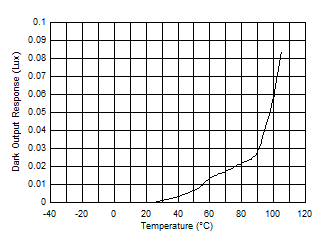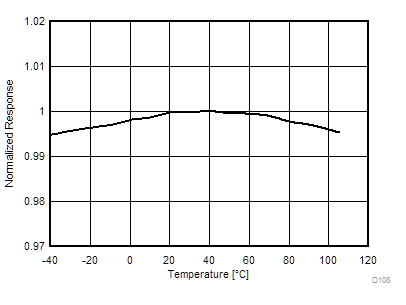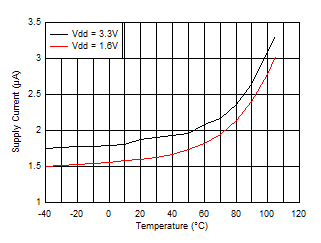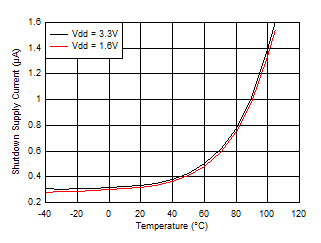ZHCSG67A March 2017 – December 2018 OPT3001-Q1
PRODUCTION DATA.
- 1 特性
- 2 应用
- 3 说明
- 4 修订历史记录
- 5 说明 (续)
- 6 Pin Configuration and Functions
- 7 Specifications
-
8 Detailed Description
- 8.1 Overview
- 8.2 Functional Block Diagram
- 8.3 Feature Description
- 8.4 Device Functional Modes
- 8.5 Programming
- 8.6
Register Maps
- 8.6.1
Internal Registers
- 8.6.1.1
Register Descriptions
- 8.6.1.1.1 Result Register (offset = 00h)
- 8.6.1.1.2 Configuration Register (offset = 01h) [reset = C810h]
- 8.6.1.1.3 Low-Limit Register (offset = 02h) [reset = C0000h]
- 8.6.1.1.4 High-Limit Register (offset = 03h) [reset = BFFFh]
- 8.6.1.1.5 Manufacturer ID Register (offset = 7Eh) [reset = 5449h]
- 8.6.1.1.6 Device ID Register (offset = 7Fh) [reset = 3001h]
- 8.6.1.1
Register Descriptions
- 8.6.1
Internal Registers
- 9 Application and Implementation
- 10Power Supply Recommendations
- 11Layout
- 12器件和文档支持
- 13机械、封装和可订购信息
7.7 Typical Characteristics
At TA = 25°C, VDD = 3.3 V, 800-ms conversion time (CT = 1), automatic full-scale range (RN[3:0] = 1100b), white LED, and normal-angle incidence of light, unless otherwise specified.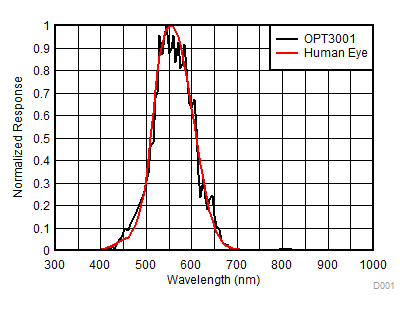
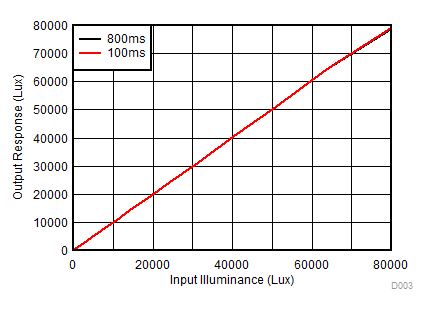
Entire Range = 0 lux to 83k lux
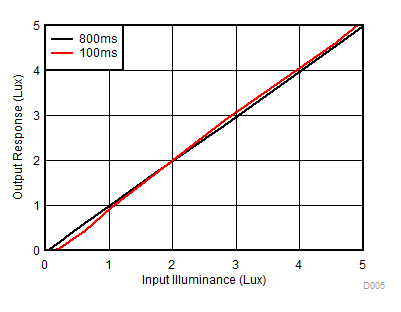
Low Range = 0 lux to 5 lux
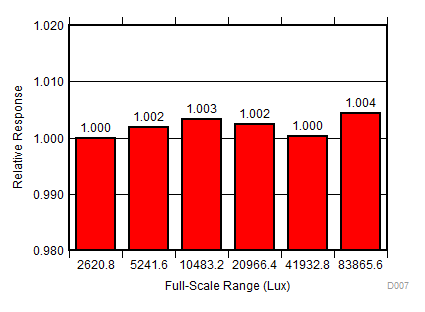
| Input illuminance = 2490 lux,
normalized to response of 2560 lux full-scale |
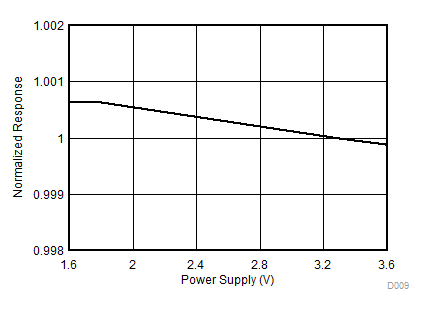
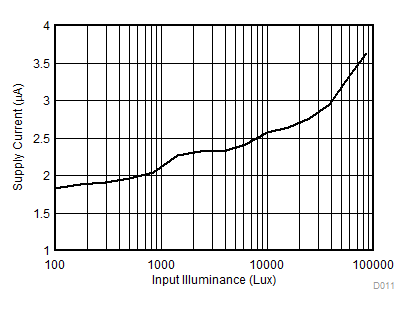
| M[1:0] = 10b |
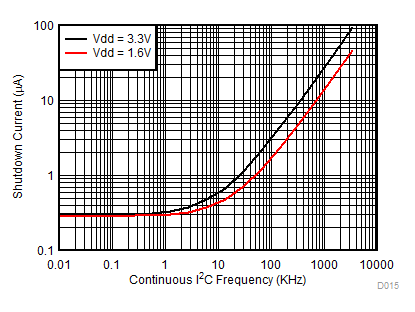
| Input illuminance = 80 lux, SCL = SDA,
continuously toggled at I2C frequency Note: A typical application runs at a lower duty cycle and thus consumes a lower current. |
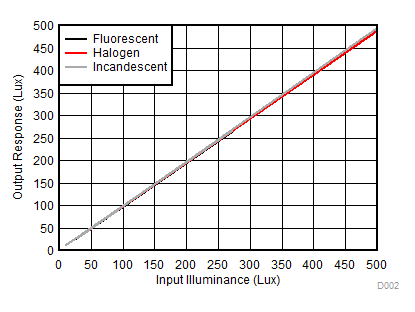
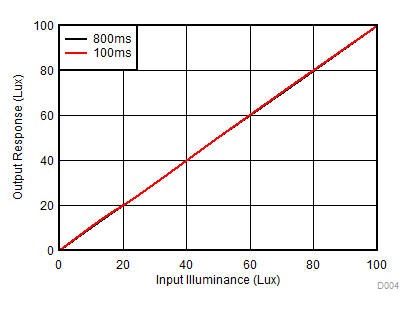
Mid Range = 0 lux to 100 lux
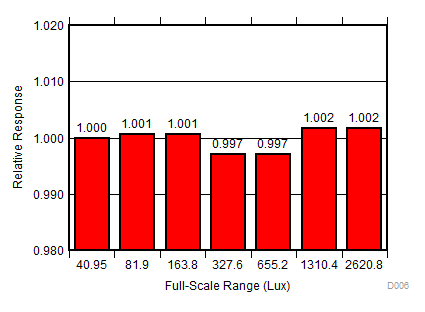
| Input illuminance = 33 lux,
normalized to response of 40.95 lux full-scale |

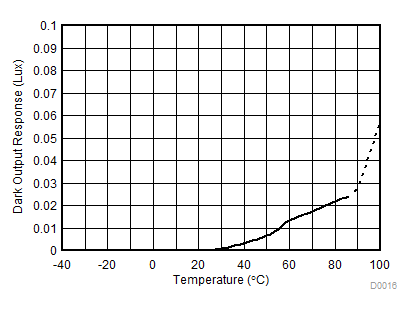
| Average of 30 devices | ||
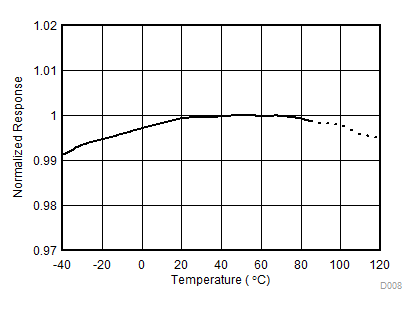
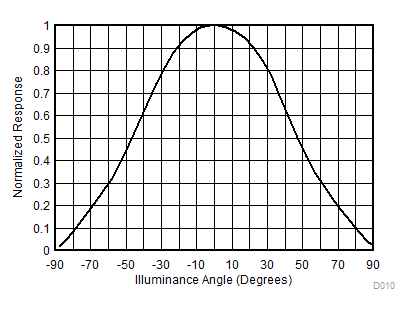
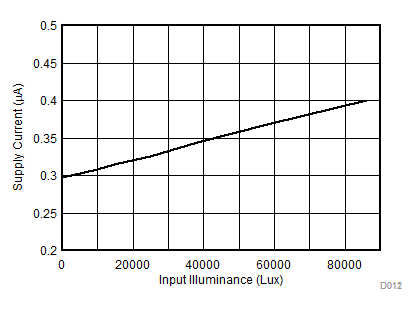
| M[1:0] = 00b |
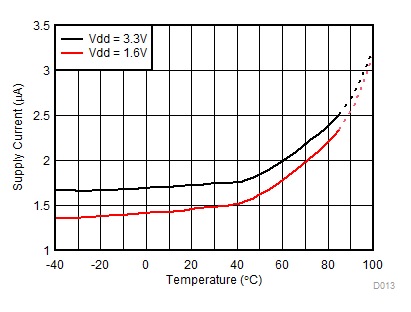
| M[1:0] = 10b |
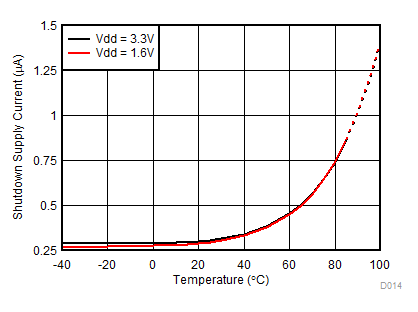
| M[1:0] = 00b, input illuminance = 0 lux |
